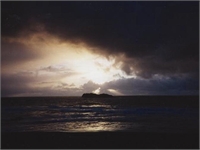
A visitors guide to Trinidad, CA
Important Notice: Our web hosting provider recently started charging us for additional visits, which was unexpected. In response, we're seeking donations. Depending on the situation, we may explore different monetization options for our Community and Expert Contributors. It's crucial to provide more returns for their expertise and offer more Expert Validated Answers or AI Validated Answers. Learn more about our hosting issue here.

A visitors guide to Trinidad, CA
You must be logged in to post a comment.
Trinidad, California is one of this state’s best-kept secrets. In all of my travels, I have never been to an area more beautiful than Trinidad and its environs—and I was fortunate enough to have lived there for eight years. When I lived there, if someone published an article encouraging people to visit Trinidad, I might have arranged an “accident” for said individual. As I no longer live there—and those that do have no way to find me—the thought of crowds descending on the little town bothers me a whole lot less.
Trinidad began as a port to supply suckers panning for gold in the Salmon, Klamath and Trinity rivers; a lucrative business until what little gold remained in the rivers found its way into the miner’s pockets. Once the gold ran dry, some entrepreneur finally noticed the many ancient, towering trees all around the area and decided to cut them all down, converting the bay into the sole exporter of lumber for the area. Understandably, they ran out of trees to cut as well in time. Amazingly and in direct contradiction to the gloomy predictions of environmentalists who claim that clear-cutting redwoods creates barren expanses, a new crop of redwoods sprang up from the detritus of the trees converted into houses and decks and now Trinidad is lush with second- and third-growth redwoods.